All products featured are independently chosen by us. However, SoundGuys may receive a commission on orders placed through its retail links. See our ethics statement.
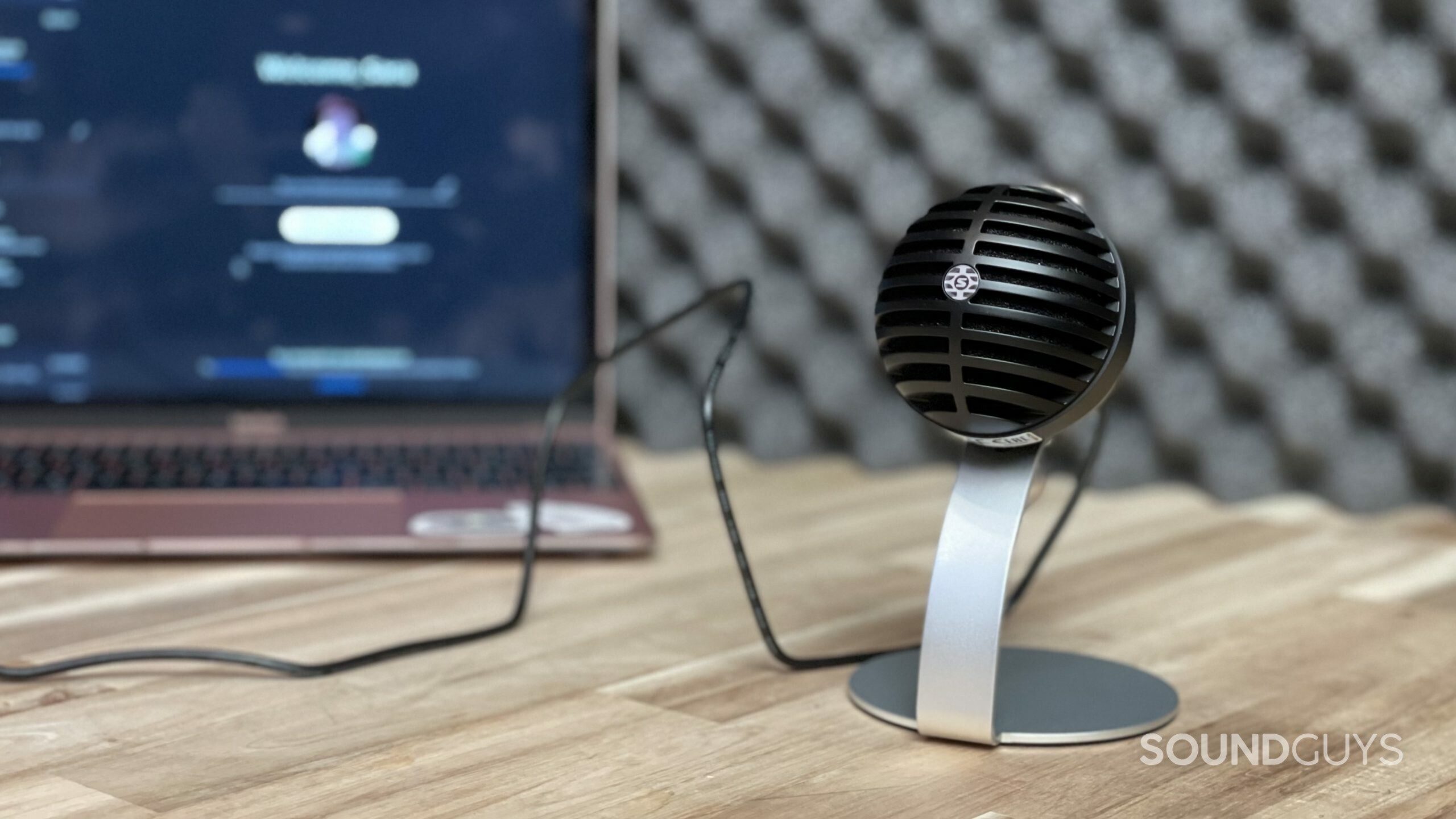
Shure MV5C review
Published onOctober 6, 2022
Shure MV5C
Chances are you know about Shure microphones—the Shure SM58, SM7b, and SM57 are among the most famous models, all known for their applications in music. However, Shure mics aren’t just for stages and studios, the company also has mics for home office use. That’s where the Shure MV5C comes in. This portable microphone was designed to highlight your speaking voice for use in Zoom meetings and the like. We spent a week testing out the Shure MV5C—let’s see how it actually performs.
At-home workers who need a home office microphone for calls. If you’re often the speaker during your Zoom meetings, you should definitely consider the MV5C.
Podcasters can take advantage of the Speech Enhancement mode to make their recordings shine.
Editor’s note: This review of the Shure MV5C was updated on October 6, 2022, to include an Alternatives section.
What’s it like to use the Shure MV5C?

By default, the Shure MV5C is screwed into its included stand with a rotating ball head, which gives it a wide range of flexibility. The mic is smaller and lighter than a baseball, and it feels cheap because of its all-plastic build, but this also makes it highly portable. Besides the mic and stand, you get a microUSB to USB-A cable, a microUSB to USB-C cable, and an instruction manual. The inclusion of two cables (each one-meter long) makes it easy to use the mic on both PC and Mac.You can mount the MV5C to any stand with a 1/4-inch thread adapter if you don’t want to keep it on its desk stand. The mic houses a button for mode switching, a mute button, a volume adjustment dial, a few indicator lights, a microUSB port, and an aux port. The mic’s capsule is covered in an internal foam pop filter and a plastic grille.
How do you control the Shure MV5C?
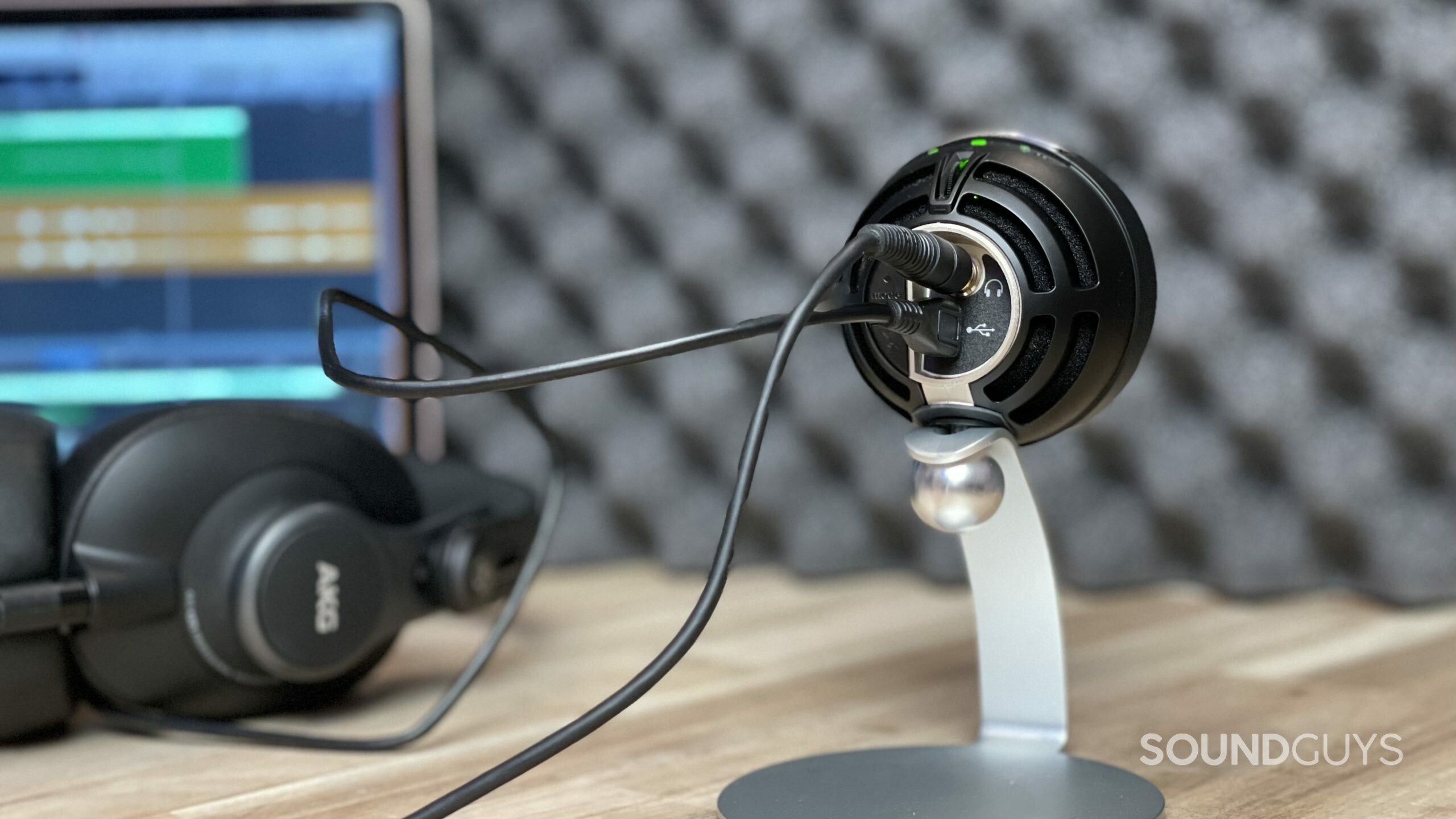
The Shure MV5C works best for recording audio and during conference calls. This plug-and-play mic automatically assigns itself as your computer’s mic input when you plug it in. However, when you play audio from your computer with Shure’s direct monitoring enabled, the audio will come through your computer’s speakers by default. To hear audio played back through the MV5C-attached headset, you must manually change the audio output to the Shure MV5C in your computer’s sound settings. Unfortunately, this means if you unplug your headphones from the mic and leave the mic plugged into the computer, you’ll have to reset the audio output to play from your laptop.
The volume knob on the back of the microphone adjusts both the direct monitoring and audio output volume, though it is not tied to the volume adjustment from your laptop (which is normal). To mute the mic, just press the mute button and all the indicator lights will turn red. The Shure MV5C has one polar pattern: cardioid. This means it has a heart-shaped pickup that is most sensitive to sounds directly in front of the mic, and is less sensitive to off-axis sound sources.
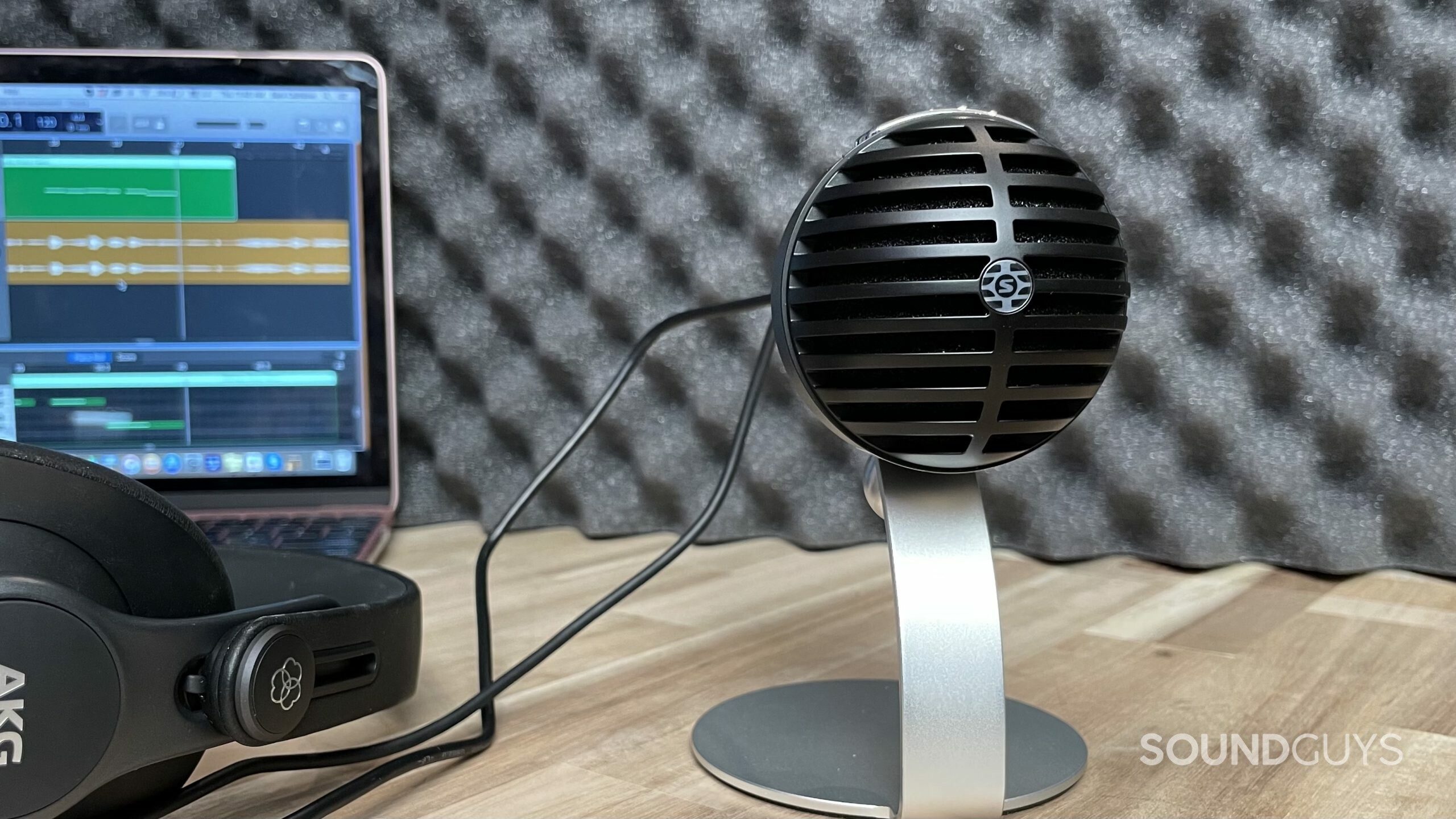
The mic has three indicator lights with multiple meanings that took me a bit of studying, since the light pattern meanings aren’t intuitive.
| Off | Red | Green | |
|---|---|---|---|
Monitor Indicator (Headphone LED) | Off Headphone output is disabled | Red Headphone output is enabled, direct monitoring is off | Green Headphone output is enabled, direct monitoring is on |
Status Indicator | Off N/A | Red Mic is muted | Green Active USB connection |
Speech Mode Indicator | Off Flat mode enabled | Red Mic is muted | Green Speech Enhancement mode enabled |
To transfer output over to the mic’s direct monitoring port, press and hold the mode button on the back of the mic. The headphone LED will shine green to indicate it is enabled. The instruction manual says that you have to press and hold the mode button as you are plugging the mic into your computer to enable direct monitoring, but this sam command works after the mic is already plugged in too.
What is the Shure MV5C’s Speech Enhancement mode?
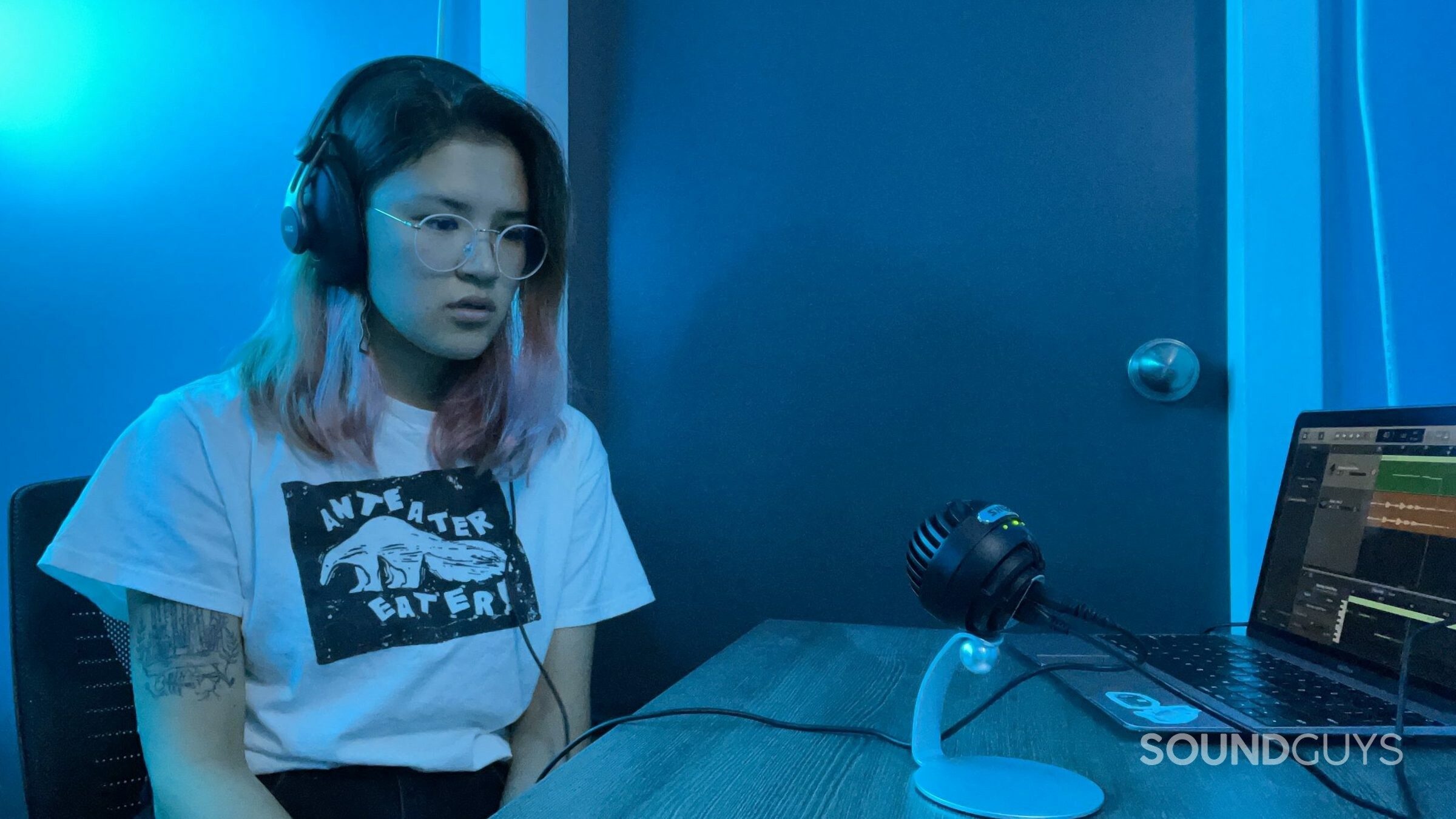
The Shure MV5C has two recording presets (Flat mode and Speech Enhancement mode) that you can switch between with a press of the rear “mode” button.
Flat mode is unprocessed, whereas Speech Enhancement mode boosts vocal frequencies by adjusting gain, compression, and equalization, and using a de-esser. The de-esser reduces the loudness of sibilant sounds, which is the harsh sound produced when an “s” is recorded. Speech Enhancement mode emphasizes vocal frequencies which makes it great for calls, whereas Flat mode is better if you’re planning to make adjustments to a recording in post-processing.
Does the Shure MV5C sound good?
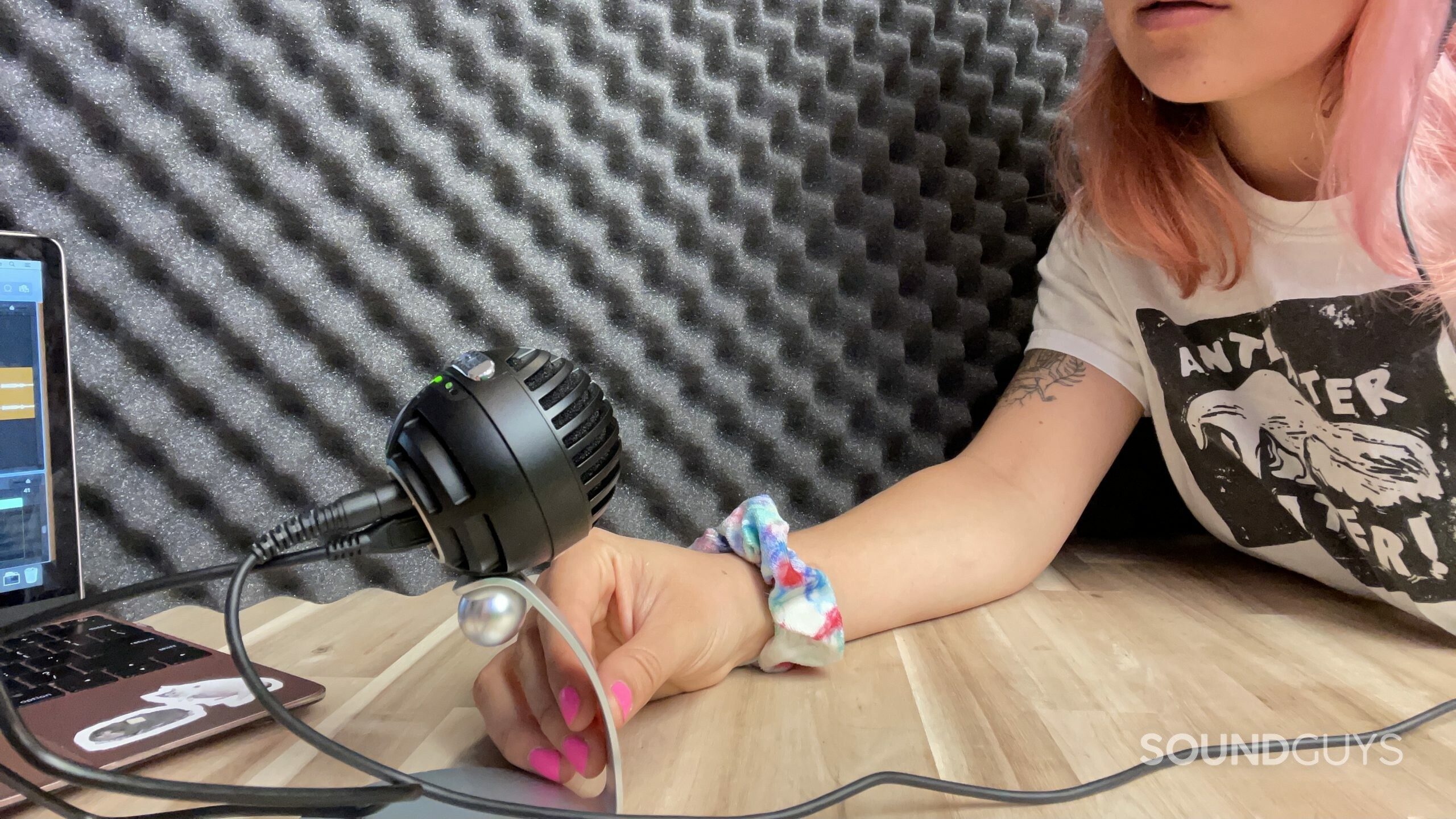
The Shure MV5C effectively registers vocal frequencies on both Flat mode and Speech Enhancement mode. The audio is clear enough to get you through a conference call, and could work just fine to record a podcast episode. Flat mode doesn’t do a great job rejecting off-axis sounds like a fan blowing, but Speech Enhancement mode’s emphasis on vocal frequencies helps reduce background noise.
If you’re someone who generally sings louder than you talk, you might find that singing into the Shure MV5C creates issues. When recording the singing demo below, I had to move 30 centimeters away from the mic capsule to avoid clipping (audio distortion) and the embedded pop filter doesn’t do much to prevent plosives (harsh “p” sounds), which you can hear at 0:05 and 0:14.
I wouldn’t recommend using the Shure MV5C to record instruments of any kind as the sound signature is not tailored for such purposes. While the guitar demos below aren’t awful, they’re not pleasant either.
Shure MV5C Flat mode microphone sample:
Shure MV5C Speech Enhancement mode microphone sample:
Shure MV5C Flat mode singing sample:
Shure MV5C Flat mode acoustic guitar sample:
Shure MV5C Flat mode electric guitar sample:
How does the microphone sound to you?
As of August 19, 2022, 48% of voters voted that the Shure MV5C mic samples sound “Good” and 27% of voters said they sound “Okay”. For a mic of this price, these results are a little less positive than we would hope for.
Hold up! Something’s missing:
This section is typically where we display a frequency response chart to show you exactly where the audio output shines and where its deficiencies lie. Unfortunately, we’ve hit a technical snag in our testing. To combat this, we have purchased an SCM-3 mic and will add a speaker with standardized output samples to update our testing and data collection. It will take a while to reach our office in Canada, but we will update this review (and many others!) once we’re able with improved sound quality measurements and performance plots. These will be made obvious by an announcement explaining the change, and a new chart aesthetic.
Thank you for bearing with us, and we hope to see you again once we’ve sorted everything out.
Should you buy the Shure MV5C?
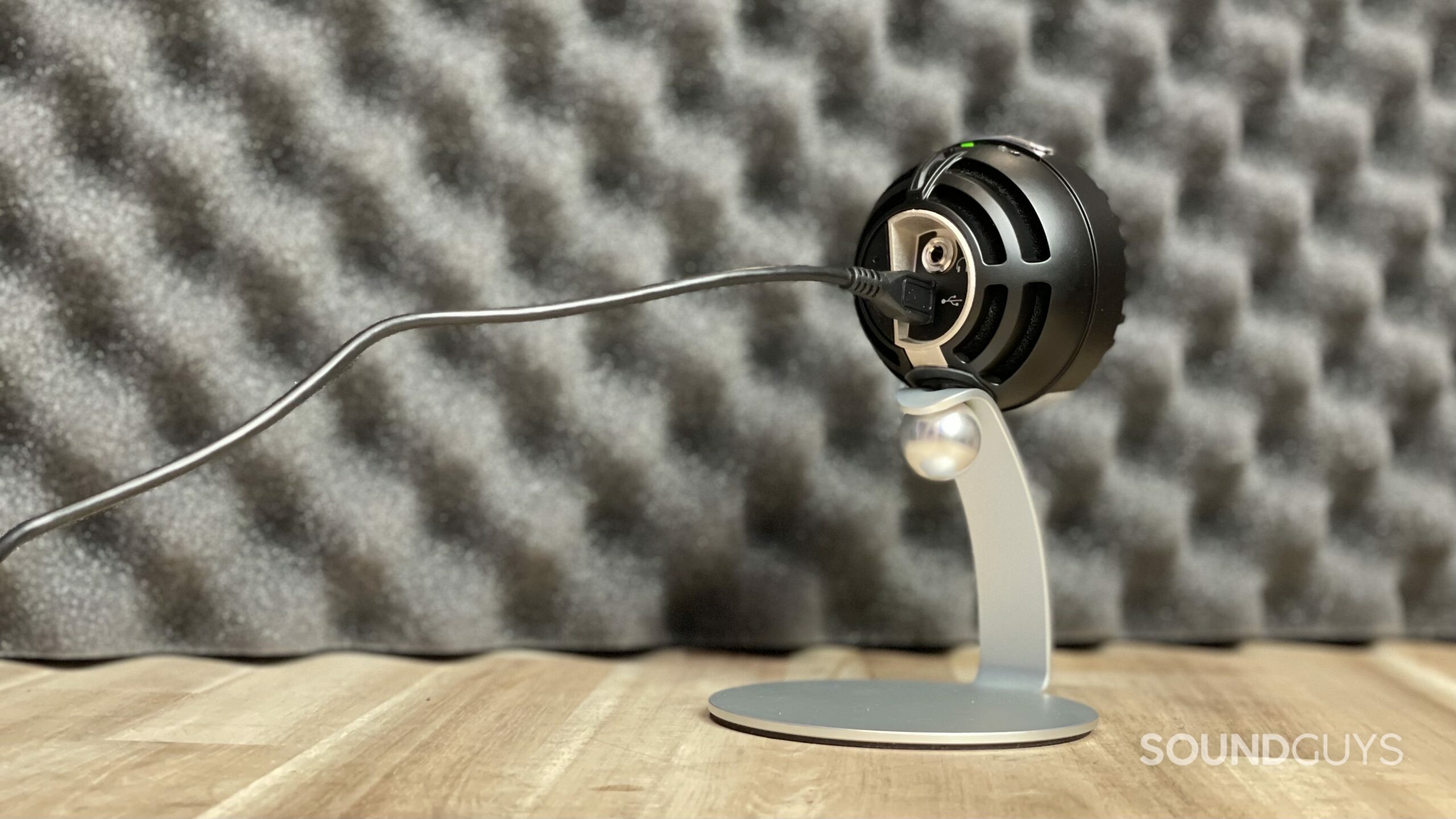
While the Shure MV5C has its appeal—a compact form factor and simple design—it has too many drawbacks to make it worth the money. The design feels a little junky, and the controls aren’t intuitive.
The Shure MV5C is not a bad mic—it does what it’s supposed to do quite well: record clear speech. The Speech Enhancement mode works nicely, though it isn’t groundbreaking by any means. It’s also a nice touch that Shure included USB-A and USB-C cables. However, you’re clearly spending extra for the Shure brand name here, and you can easily get a more affordable (and equally effective) product from a smaller brand. At this price, you’re better off going for something like the Movo UM700.

What should you get instead of the Shure MV5C?
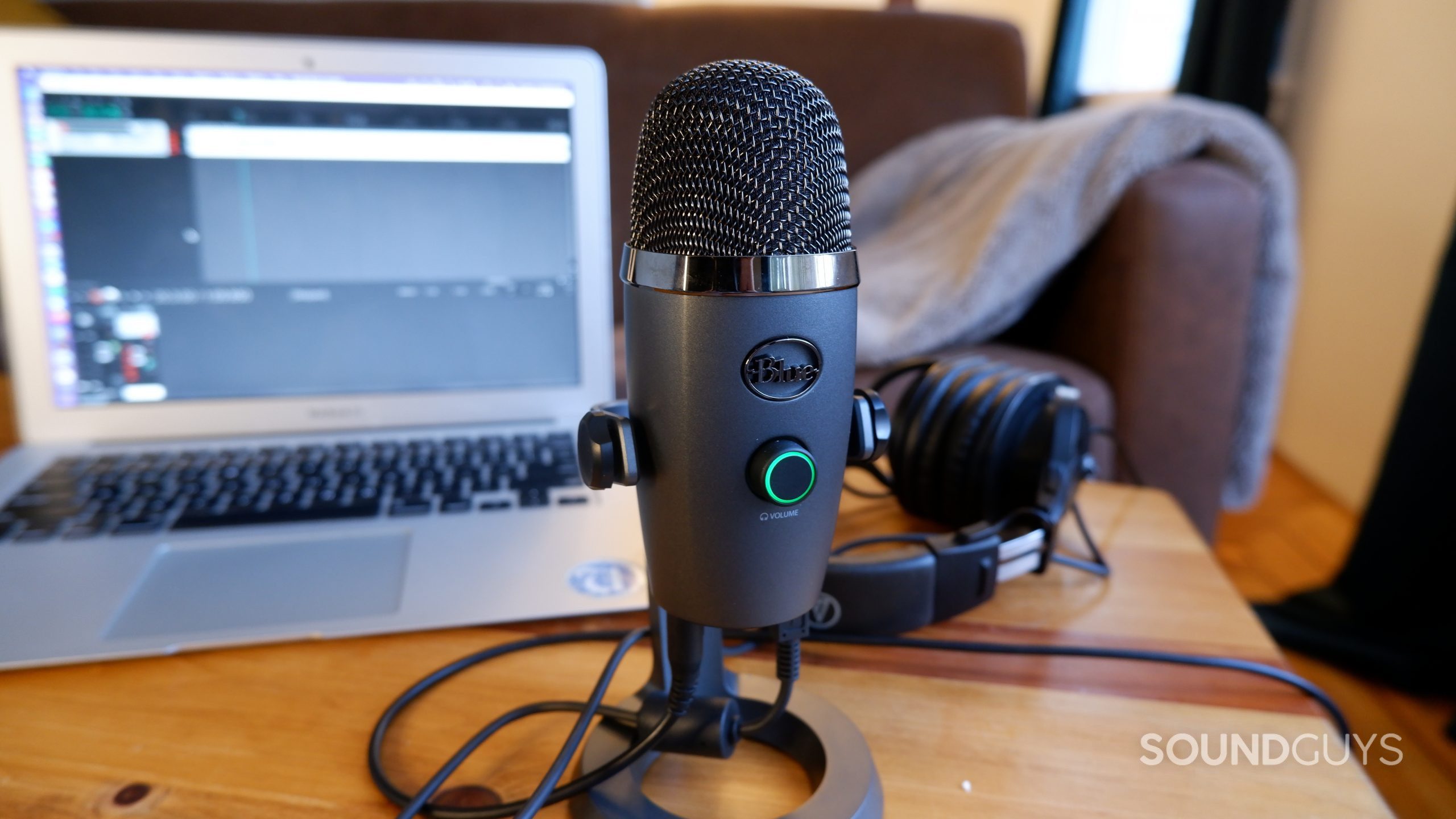
You can find similar quality products for $50 USD, such as the Razer Seiren Mini and Blue Yeti Nano. The Seiren Mini and Yeti Nano are both compact microphones, but you may find the Seiren Mini literally comes up a bit short. It will match all of your Razer gaming peripherals at least. The Yeti Nano is a bit more robust since it comes with app support through Blue Sherpa (Mac and Windows). With this software, you can control the gain, headphone monitoring volume, and pickup pattern. Heck, you can even adjust the EQ and apply a preset to adjust how the mic sounds.
The Yeti Nano costs about $99 USD but you can find it for $79 USD. If you absolutely refuse to spend more than $50 USD, get Razer’s microphone.
Frequently asked questions about the Shure MV5C
If you have some money to spare and want a USB mic from Shure, we recommend checking out the Shure MV7. This mic actually has both USB and XLR connection options, and they can be used simultaneously to create backup recordings if you so choose. This mic has studio-quality sound and comes with a companion app that allows you to really customize the sound and recording experience.
No, the Shure MV5C is specifically designed for conference calls (hence the ‘C’) and can only connect to a PC or Mac computer. The Shure MV5, on the other hand, is also compatible with iPhones and Android phones. The two microphones look very similar and function similarly, but the MV5 has an extra recording mode for instruments.